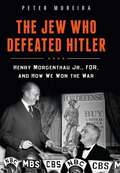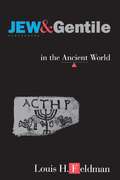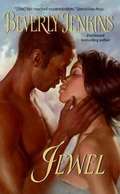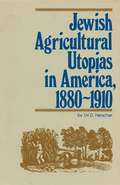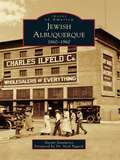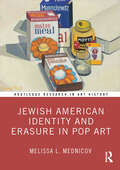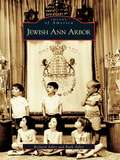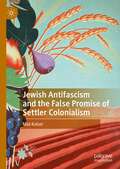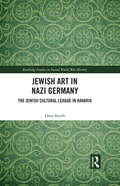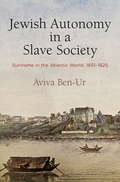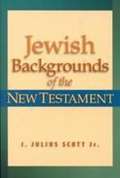- Table View
- List View
Jew Who Defeated Hitler: Henry Morgenthau Jr., FDR, and How We Won The War
by Peter MoreiraPresident Franklin D. Roosevelt coined the slogan "The Arsenal of Democracy" to describe American might during the grim years of World War II. The man who financed that arsenal was his Secretary of the Treasury, Henry Morgenthau Jr. This is the first book to focus on the wartime achievements of this unlikely hero-a dyslexic college dropout who turned himself into a forceful and efficient administrator and then exceeded even Roosevelt in his determination to defeat the Nazis. Based on extensive research at the FDR Library in Hyde Park, NY, author Peter Moreira describes Morgenthau's truly breathtaking accomplishments: He led the greatest financial program the world has ever seen, raising $310 billion (over $4.8 trillion in today's dollars) to finance the war effort. This was largely done without the help of Wall Street by appealing to the patriotism of the average citizen through the sale of war bonds. In addition, he championed aid to Britain before America entered the war; initiated and oversaw the War Refugee Board, spearheading the rescue of 200,000 Jews from the Nazis; and became the architect of the 1944 Bretton Woods Conference, which produced the modern economic paradigm. The book also chronicles Morgenthau's many challenges, ranging from anti-Semitism to the postwar "Morgenthau Plan" that was his undoing. This is a captivating story about an understated and often overlooked member of the Roosevelt cabinet who played a pivotal role in the American war effort to defeat the Nazis.
Jew and Gentile in the Ancient World: Attitudes and Interactions from Alexander to Justinian
by Louis H. FeldmanRelations between Jews and non-Jews in the Hellenistic-Roman period were marked by suspicion and hate, maintain most studies of that topic. But if such conjectures are true, asks Louis Feldman, how did Jews succeed in winning so many adherents, whether full-fledged proselytes or "sympathizers" who adopted one or more Jewish practices? Systematically evaluating attitudes toward Jews from the time of Alexander the Great to the fifth century A.D., Feldman finds that Judaism elicited strongly positive and not merely unfavorable responses from the non-Jewish population. Jews were a vigorous presence in the ancient world, and Judaism was strengthened substantially by the development of the Talmud. Although Jews in the Diaspora were deeply Hellenized, those who remained in Israel were able to resist the cultural inroads of Hellenism and even to initiate intellectual counterattacks. Feldman draws on a wide variety of material, from Philo, Josephus, and other Graeco-Jewish writers through the Apocrypha, the Pseudepigrapha, the Church Councils, Church Fathers, and imperial decrees to Talmudic and Midrashic writings and inscriptions and papyri. What emerges is a rich description of a long era to which conceptions of Jewish history as uninterrupted weakness and suffering do not apply.
Jewel
by Beverly JenkinsA proposal she had no choice but to accept . . . Though Eli Grayson is one of the most handsome, charming, and intelligent men in Grayson Grove, no one will take a chance on a confirmed bachelor. Unwilling to give up his dreams, Eli convinces his friend Jewel to pose as his wife. Their masquerade is to last just one night . . . but when word gets out, Eli and Jewel must tie the knot to save his career-and her reputation. Became a love she never expected . . . Angry at being forced to turn her life upside down, Jewel never imagined that a white-hot passion would consume her once she and Eli became husband and wife. Sharing a bed has turned their prim friendship into a sensuous love affair . . . but when a woman from Eli's past returns to stir up trouble, he and Jewel will learn just how far they'll go to protect the precious gem of their newfound passion.
Jewel of the Desert: Japanese American Internment at Topaz
by Sandra C. TaylorAt the outbreak of World War II, the Japanese Americans who lived in the San Francisco Bay Area were sent to "relocation camps," chiefly to Topaz in the Utah desert. This book, based on interviews and extensive historical research, is a vivid account of the lives of the people who were forcibly confined at Topaz. The book also examines how the internment experience affected these people in the decades after the war. Other books in this subject area are available from Bookshare.
Jewels: A Secret History
by Victoria FinlayThroughout history the desire for jewels has made and destroyed individual, families and even empires. Today, despite our ability to manufacture synthetics, gemstones still hold their appeal. Victoria Finlay investigates why in her extraordinary journey to uncover the hidden world of precious stones. The starting point is a sapphire given to her by her parents that was harvested, not by a miner as she had imagined but by men in muddy loincloths trawling a warm stream in Sri Lanka. The extraordinary travels in JEWELS: A SECRET HISTORY take her cycling along the Baltic Amber Route, down the emerald mines of Afghanistan. As we learn from a ruby trader in Burma, the more precious a jewel, the greater the human cost of acquiring it, and JEWELS: A SECRET HISTORY also explores the human histories of gemstones. Along the way we learn from Victoria, a qualified gemologist, how to grade a pearl, what New Age 'crystal therapy' is about, and why one of the rarest sapphires in the world is orange. Victoria Finlay's unique blending of travelogue and narrative history ensures that this book, the first for the general reader, will be as unforgettable as the stones themselves.
Jewish Agricultural Utopias in America, 1880-1910
by Uri D HerscherBrook Farm, Oneida, Amana, and Nauvoo are familiar names in American history. Far less familiar are New Odessa, Bethlehem-Jehudah, Cotopaxi, and Alliance-the Brook Farms and Oneidas of the Jewish people in North America. <P><P> The wealthy, westernized leaders of late nineteenth-century American Jewry and a member of the immigrating Russian Jews shared an eagerness to "repeal" the lengthy socioeconomic history in which European Jews were confined to petty commerce and denied agricultural experience. A small group of immigrant Jews chose to ignore urbanization and industrialization, defy the depression afflicting agriculture in the late 1800s, and devote themselves to experiments in collective farming in America. <P><P> Some of these idealists were pious; others were agnostics or atheists. Some had the support of American and West European philanthropists; others were willing to go it alone. But in the farming colonies they founded in Oregon, Colorado, the Dakotas, Michigan, Louisiana, Arkansas, Virginia, and New Jersey, among other places, they were sublimely indifferent to the need for careful planning and thus had limited success. Only in New Jersey, close to markets and supporters in New York and Philadelphia, were colonization efforts combined with agro-industrial enterprises; consequently, these colonies were able to survive for as long as one generation.
Jewish Albuquerque: 1860-1960 (Images of America)
by Dr Noel Pugach Naomi SandweissAlbuquerque, founded by Spanish colonists in 1706, seems an unusual place for Jewish immigrants to settle. Yet long before New Mexico statehood in 1912, Jewish settlers had made their homes in the high desert town, located on the banks of the Rio Grande River. Initially, business opportunities lured German Jews to the Santa Fe Trail; during the expansive railroad days of the 1880s, Jewish citizens were poised to take on leadership roles in business, government, and community life. Henry Jaffa, a Jewish merchant and acquaintance of Wyatt Earp, served as Albuquerque's first mayor. From launching businesses along Central Avenue, to establishing the Indian Trading Room at the famed Alvarado Hotel and founding trading posts, Route 66 tourist establishments, and the Sandia Tram, Jewish businesspeople partnered with their neighbors to boost Albuquerque's already plentiful assets. Along the way, community members built Jewish organizations--a B'nai B'rith chapter, Congregation Albert, and Congregation B'nai Israel--that made their mark upon the larger Albuquerque community.
Jewish American Identity and Erasure in Pop Art (Routledge Research in Art History)
by Melissa L. MednicovThis volume focuses on Jewish American identity within the context of Pop art in New York City during the sixties to reveal the multivalent identities and selves often ignored in Pop scholarship. Melissa L. Mednicov establishes her study within the context of prominent Jewish artists, dealers, institutions, and collectors in New York City in the Pop sixties. Mednicov incorporates the historiography of Jewish identity in Pop art—the ways by which identity is named or silenced—to better understand how Pop art made, or marked, different modes of identity in the sixties. By looking at a nexus of the art world in this period and the ways in which Jewish identity was registered or negated, Mednicov is able to further consider questions about the ways mass culture influenced Pop art and its participants—and, to a larger extent, formed further modes of identity.The book will be of interest to scholars working in art history, Jewish studies, and American studies.
Jewish Ann Arbor (Images of America)
by Richard Adler Ruth AdlerThe earliest Jewish settlers arrived in Michigan during the mid-18th century. Primarily traders associated with the burgeoning fur industry, few of these entrepreneurs remained permanently. During the early 1840s, the five Weilbrothers, farmers and tanners from Germany, became the first prominent Jewish settlers in Washtenaw County. By the end of that decade, a Jewish cemetery was established on what is now the site of the Horace Rackham Building on the University of Michigan campus. Though the Weil familyeventually moved west, the cemetery remained as a marker for what was then a miniscule Jewish presence. In the early 20th century, Osias Zwerdling and the Lansky family arrived. In addition to reestablishing a Jewish presence in Ann Arbor, they helped form what became Beth Israel Congregation. Growth of the Ann Arbor Jewish community coincided with the evolution of the university, as well as the city. By the end of the 20th century, a vibrant community representing all facets of Judaism had been established.
Jewish Antifascism and the False Promise of Settler Colonialism
by Max KaiserThis book takes a timely look at histories of radical Jewish movements, their modes of Holocaust memorialisation, and their relationships with broader anti-colonial and anti-racist struggles. Its primary focus is Australia, where Jewish antifascism was a major political and cultural force in Jewish communities in the 1940s and early 1950s. This cultural and intellectual history of Jewish antifascism utilises a transnational lens to provide an exploration of a Jewish antifascist ideology that took hold in the middle of the twentieth century across Jewish communities worldwide. It argues that Jewish antifascism offered an alternate path for Jewish politics that was foreclosed by mutually reinforcing ideologies of settler colonialism, both in Palestine and Australia.
Jewish Art in Nazi Germany: The Jewish Cultural League in Bavaria (Routledge Studies in Second World War History)
by Dana SmithThis book provides a social and cultural history of Jewish art in Nazi Germany, with a focus on the Jewish artists, art critics, and audiences in Nazi Bavaria. From the time of its conceptualization in the autumn of 1933 until its final curtain call in November 1938, the Jewish Cultural League in Bavaria sustained three departments: music, visual arts, and adult education. The Bavarian example steps outside the highly professional cultural milieu of Jewish Berlin, and instead looks at relatively unknown efforts of Bavarian Jewish artists as they used art to define what it now meant, to them, to be Jewish under Nazism. Insightful and engaging, this book is ideal for advanced undergraduate students, graduate students, and scholars interested in social and cultural histories of Jews in Germany.
Jewish Autonomy in a Slave Society: Suriname in the Atlantic World, 1651-1825 (The Early Modern Americas)
by Aviva Ben-UrA fascinating portrait of Jewish life in Suriname from the 17th to 19th centuriesJewish Autonomy in a Slave Society explores the political and social history of the Jews of Suriname, a Dutch colony on the South American mainland just north of Brazil. Suriname was home to the most privileged Jewish community in the Americas where Jews, most of Iberian origin, enjoyed religious liberty, were judged by their own tribunal, could enter any trade, owned plantations and slaves, and even had a say in colonial governance.Aviva Ben-Ur sets the story of Suriname's Jews in the larger context of Atlantic slavery and colonialism and argues that, like other frontier settlements, they achieved and maintained their autonomy through continual negotiation with the colonial government. Drawing on sources in Dutch, English, French, Hebrew, Portuguese, and Spanish, Ben-Ur shows how, from their first permanent settlement in the 1660s to the abolition of their communal autonomy in 1825, Suriname Jews enjoyed virtually the same standing as the ruling white Protestants, with whom they interacted regularly. She also examines the nature of Jewish interactions with enslaved and free people of African descent in the colony. Jews admitted both groups into their community, and Ben-Ur illuminates the ways in which these converts and their descendants experienced Jewishness and autonomy. Lastly, she compares the Jewish settlement with other frontier communities in Suriname, most notably those of Indians and Maroons, to measure the success of their negotiations with the government for communal autonomy. The Jewish experience in Suriname was marked by unparalleled autonomy that nevertheless developed in one of the largest slave colonies in the New World.
Jewish Backgrounds of the New Testament
by Jr. J. Julius ScottThis survey of intertestamental Judaism illuminates the customs and controversies that provide essential background for understanding the New Testament. Scott opens a door into the Jewish world and literature leading up to the development of Christianity. He also offers an accessible overview of the data through helpful charts, maps, and diagrams incorporated throughout the text to engage his readers.
Jewish Bible Translations: Personalities, Passions, Politics, Progress
by Leonard GreenspoonJewish Bible Translations is the first book to examine Jewish Bible translations from the third century BCE to our day. It is an overdue corrective of an important story that has been regularly omitted or downgraded in other histories of Bible translation. Examining a wide range of translations over twenty-four centuries, Leonard Greenspoon delves into the historical, cultural, linguistic, and religious contexts of versions in eleven languages: Arabic, Aramaic, English, French, German, Greek, Hungarian, Italian, Russian, Spanish, and Yiddish. He profiles many Jewish translators, among them Buber, Hirsch, Kaplan, Leeser, Luzzatto, Mendelssohn, Orlinsky, and Saadiah Gaon, framing their aspirations within the Jewish and larger milieus in which they worked. Greenspoon differentiates their principles, styles, and techniques—for example, their choice to emphasize either literal reflections of the Hebrew or distinctive elements of the vernacular language—and their underlying rationales. As he highlights distinctive features of Jewish Bible translations, he offers new insights regarding their shared characteristics and their limits. Additionally, Greenspoon shows how profoundly Jewish translators and interpreters influenced the style and diction of the King James Bible. Accessible and authoritative for all from beginners to scholars, Jewish Bible Translations enables readers to make their own informed evaluations of individual translations and to holistically assess Bible translation within Judaism.
Jewish Blood: Reality and metaphor in history, religion and culture (Routledge Jewish Studies Series)
by Mitchell B. HartThis book deals with the Jewish engagement with blood: animal and human, real and metaphorical. Concentrating on the meaning or significance of blood in Judaism, the book moves this highly controversial subject away from its traditional focus, exploring how Jews themselves engage with blood and its role in Jewish identity, ritual and culture. With contributions from leading scholars in the field, the book brings together a wide range of perspectives and covers communities in ancient Israel, Europe and America, as well as all major eras of Jewish history: biblical, Talmudic, medieval and modern. Providing historical, religious and cultural examples ranging from the "Blood Libel" through to the poetry of Uri Zvi Greenberg, this volume explores the deep continuities in thought and practice related to blood. Moreover, it examines the continuities and discontinuities between Jewish and Christian ideas and practices related to blood, many of which extend into the modern, contemporary period. The chapters look at not only the Jewish and Christian interaction, but the interaction between Jews and the individual national communities to which they belong, including the complex appropriation and rejection of European ideas and images undertaken by some Zionists, and then by the State of Israel. This broad-ranging and multidisciplinary work will be of interest to students of Jewish Studies, History and Religion.
Jewish Blues: A History of a Color in Judaism (Jewish Culture and Contexts)
by Gadi SagivJewish Blues presents a broad cultural, social, and intellectual history of the color blue in Jewish life between the sixteenth and twenty-first centuries. Bridging diverse domains such as religious law, mysticism, eschatology, as well as clothing and literature, this book contends that, by way of a protracted process, the color blue has constituted a means through which Jews have understood themselves.In ancient Jewish texts, the term for blue, tekhelet, denotes a dye that serves Jewish ritual purposes. Since medieval times, however, Jews gradually ceased to use tekhelet in their ritual life. In the nineteenth century, however, interest in restoring ancient dyes increased among European scholars. In the Jewish case, rabbis and scientists attempted to reproduce the ancient tekhelet dye. The resulting dyes were gradually accepted in the ritual life of many Orthodox Jews. In addition to being a dye playing a role in Jewish ritual, blue features prominently in the Jewish mystical tradition, in Jewish magic and popular custom, and in Jewish eschatology. Blue is also representative of the Zionist movement, and it is the only chromatic color in the national flag of the State of Israel.Through the study of the changing roles and meanings attributed to the color blue in Judaism, Jewish Blues sheds new light on the power of a visual symbol in shaping the imagination of Jews throughout history. The use of the color blue continues to reflect pressing issues for Jews in our present era, as it has become a symbol of Jewish modernity.
Jewish Books in North Africa: Between the Early Modern and Modern Worlds (Sephardi and Mizrahi Studies)
by Noam SiennaJewish Books in North Africa delves into the multifaceted significance of books among North African Jews. From the late Middle Ages to the 19th century, this exploration encompasses the history, manufacture, distribution, and readership of Jewish books. These texts were not mere vessels of knowledge; they were integral to a vibrant cultural tapestry that stretched across North Africa, the Middle East, and Europe.Author Noam Sienna unveils a vast Sephardic world created by these books. This literary network transcended geographical boundaries, connecting Jewish communities from Fez and Tunis to Salonica, Jerusalem, and Livorno.By examining cultural centers and tracing the journey of these texts, Sienna provides depth to our understanding of a remarkably global and worldly book culture, and its evolving role in the growth of Jewish modernity.While the content of Jewish books has long fascinated scholars, Jewish Books in North Africa shifts our focus to the physical context. These books were not isolated artifacts; they were embedded in cultural networks during a period of religious, political, and cultural transformation. Sienna's work sheds light on the intricate interplay between books and the dynamic world in which they existed.
Jewish Buenos Aires, 1890-1939: In Search of an Identity
by Dr Victor A MirelmanVictor Mirelman, in his study of the greatest concentration of Latin American Jewry, examines the changing facade of the Argentinean Jewish community from the beginning of mass Jewish immigration in 1890 to its decline in 1930. During this period, Jews arrived from Russia, Poland, Romania, Syria, Turkey and Morocco Each group founded its own synagogues. mutual help organizations. hospitals. cultural associations. and newspapers of particular vitality was the Yiddish press and the Yiddish theatre. Jewish immigrants were also especially active politically, particularly in the Socialist Party and in the workers' unions. <P><P> Based on research in the Argentine archives. Jewish Buenos Aires, 1890-1930 describes the immigration and settlement process. studies the first generation of Argentine-born Jews. and provides an understanding of assimilation and acculturation. Mirelman discusses the religious life of the community differentiating between the Ashkenazim and the various Sephardic groups and devotes chapters to Zionism, to Jewish culture in Yiddish. Hebrew. and Spanish. to education; and to social action Issues that created conflict and friction are analyzed in detail.
Jewish Cattle Traders in the German Countryside, 1919–1939: Economic Trust and Antisemitic Violence
by Stefanie FischerJewish Cattle Traders in the German Countryside, 1919–1939, explores the social and economic networks in which this group operated and the informal but durable bonds between Jewish cattle traders and farmers that not even incessant Nazi attacks could break.Stefanie Fischer combines approaches from social history, economic history, and sociology to challenge the longstanding cliché of the shady Jewish cattle dealer. By focusing on trust and social connections rather than analyzing economic trends, Fischer exposes the myriad inconsistencies that riddled the process of expelling the Jews from Germany.Jewish Cattle Traders in the German Countryside, 1919–1939, examines the complexities of relations between Jews and non-Jews who were engaged in economic and social exchange. In the process, Fischer challenges previous understandings of everyday life under Nazi rule and discovers new ways in which Jewish agency acted as a critical force throughout the exclusionary processes that took place in Hitler's Germany.
Jewish Centers and Peripheries: Europe Between America and Israel Fifty Years After World War II
by S. Llan TroenAfter World War II, the centre of gravity for world Jewry moved utside Europe. In the aftermath of the Holocaust, large-scale emigration and post-war assimilation resulted in a disheartening contraction of European Jewry, with the notable exception of France. Today, Europe's Jews number only 17 percent of the world Jewish population. At the beginning of this century, they comprised 83 percent and were the centre of the modern Jewish experience. In a radical reversal, former peripheries became the centres, notably American Jewry, the largest and most dynamic of the Diaspora communities, and the State of Israel. An examination of the altered place of Europe and its future role in Jewish history is long overdue. Jewish Centers and Peripheries examines the dynamic relationship between European, American, and Israeli communities at times bringing personal knowledge of significant events pertinent to understanding the relationships. Collectively they suggest that present conditions are ripe for the re-emergence of European Jewry, though on a scale much diminished from that of the pre-Holocaust period. Moreover, the prospects for the rejuvenation of European Jewry mirror the possibilities for Jewish continuity everywhere. Jewish Centers and Peripheries is a strikingly informative assessment of the condition of world Jewry at the close of the century.
Jewish Chicago: A Pictorial History (Images of America)
by Irving CutlerFor many years Chicago had the third largest Jewishpopulation of any city in the world. Through the medium of historic photographs, this book captures the remarkable evolution of the Jewish people of Chicago, from their immigrant beginnings in the 1840s to their present-day communities. It is a story of the cultural, religious, economic, and everyday life of Chicago's Jews. These pages bring to life the people, events, neighborhoods, and institutions that helped shape and transform today's Jewish community. The photos and maps, culled from the author's and other collections, paint a vivid and informative picture of Chicago Jewry. In addition to recalling the early immigrant German and later Eastern European Jews, this book delves into Jewish neighborhoods including the West Side, South Side, North Side, suburban communities, and Maxwell Street, a neighborhood which produced such prominent Jews as musician Benny Goodman, U.S. Supreme Court Justice Arthur Goldberg, Admiral Hyman Rickover, community organizer Saul Alinsky, and CBS founder William Paley. Chicago Jews have also made contributions to the city and the nation in the arts,commerce and industry, government service, entertainment, and labor, including seven Nobel prize winners. The images show Jews as peddlers and sweatshop workers as well as successful business entrepreneurs and professionals.
Jewish Child Soldiers in the Bloodlands of Europe (Routledge Studies in Second World War History)
by David M. RosenThis book is about the experiences of Jewish children who were members of armed partisan groups in Eastern Europe during World War II and the Holocaust. It describes and analyze the role of children as activists, agents, and decision makers in a situation of extraordinary danger and stress. The children in this book were hunted like prey and ran for their lives. They survived by fleeing into the forest and swamps of Eastern Europe and joining anti-German partisan groups. The vast majority of these children were teenagers between ages 11 and 18, although some were younger. They were, by any definition, child soldiers, and that is the reason they lived to tell their tales. The book will be of interest to general and academic audiences. There is also great interest in children and childhood across disciplines of history and the social sciences. It is likely to spark considerable debate and interest, since its argument runs counter to the generally accepted wisdom that child soldiers must first and foremost be seen as victims of their recruiters. The argument of this book is that time, place, and context play a key role in our understanding of children’s involvement in war and that in some contexts children under arms must be seen as exercising an inherent right of self-defense.
Jewish Childhood in Kraków: A Microhistory of the Holocaust
by Joanna SliwaWinner of the 2020 Ernst Fraenkel Prize from the Wiener Holocaust Library Jewish Childhood in Kraków is the first book to tell the history of Kraków in the second World War through the lens of Jewish children’s experiences. Here, children assume center stage as historical actors whose recollections and experiences deserve to be told, analyzed, and treated seriously. Sliwa scours archives to tell their story, gleaning evidence from the records of the German authorities, Polish neighbors, Jewish community and family, and the children themselves to explore the Holocaust in German-occupied Poland and in Kraków in particular. A microhistory of a place, a people, and daily life, this book plumbs the decisions and behaviors of ordinary people in extraordinary times. Offering a window onto human relations and ethnic tensions in times of rampant violence, Jewish Childhood in Kraków is an effort both to understand the past and to reflect on the position of young people during humanitarian crises.
Jewish Childhood in the Roman World
by Hagith SivanThis is the first full treatment of Jewish childhood in the Roman world. <P><P>It follows minors into the spaces where they lived, learned, played, slept, and died and examines the actions and interaction of children with other children, with close-kin adults, and with strangers, both inside and outside the home. A wide range of sources are used, from the rabbinic rules to the surviving painted representations of children from synagogues, and due attention is paid to broader theoretical issues and approaches. <P>Hagith Sivan concludes with four beautifully reconstructed 'autobiographies' of specific children, from a boy living and dying in a desert cave during the Bar-Kokhba revolt to an Alexandrian girl forced to leave her home and wander through the Mediterranean in search of a respite from persecution. The book tackles the major questions of the relationship between Jewish childhood and Jewish identity which remain important to this day.<P> The first full treatment of Jewish childhood in the Roman world, of interest to historians, sociologists, childhood experts, disabilities experts, and to scholars of antiquity, the Middle Ages and modernity interested in comparative data.<P> Explores the complex relationship between Jewish childhood and Jewish identity.<P> Brings its often overlooked subjects to life, especially through four reconstructed 'autobiographies' of specific children.
Jewish Christianity: The Making of the Christianity-Judaism Divide (The Anchor Yale Bible Reference Library)
by Matt Jackson-McCabeA fresh exploration of the category Jewish Christianity, from its invention in the Enlightenment to contemporary debates For hundreds of years, historians have been asking fundamental questions about the separation of Christianity from Judaism in antiquity. Matt Jackson-McCabe argues provocatively that the concept “Jewish Christianity,” which has been central to scholarly reconstructions, represents an enduring legacy of Christian apologetics. Freethinkers of the English Enlightenment created this category as a means of isolating a distinctly Christian religion from what otherwise appeared to be the Jewish culture of Jesus and the apostles. Tracing the development of this patently modern concept of a Jewish Christianity from its origins to early twenty-first-century scholarship, Jackson-McCabe shows how a category that began as a way to reimagine the apologetic notion of an authoritative “original Christianity” continues to cause problems in the contemporary study of Jewish and Christian antiquity. He draws on promising new approaches to Christianity and Judaism as socially constructed terms of identity to argue that historians would do better to leave the concept of Jewish Christianity behind.
